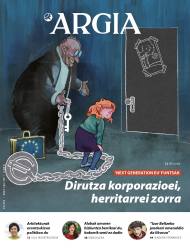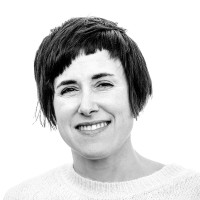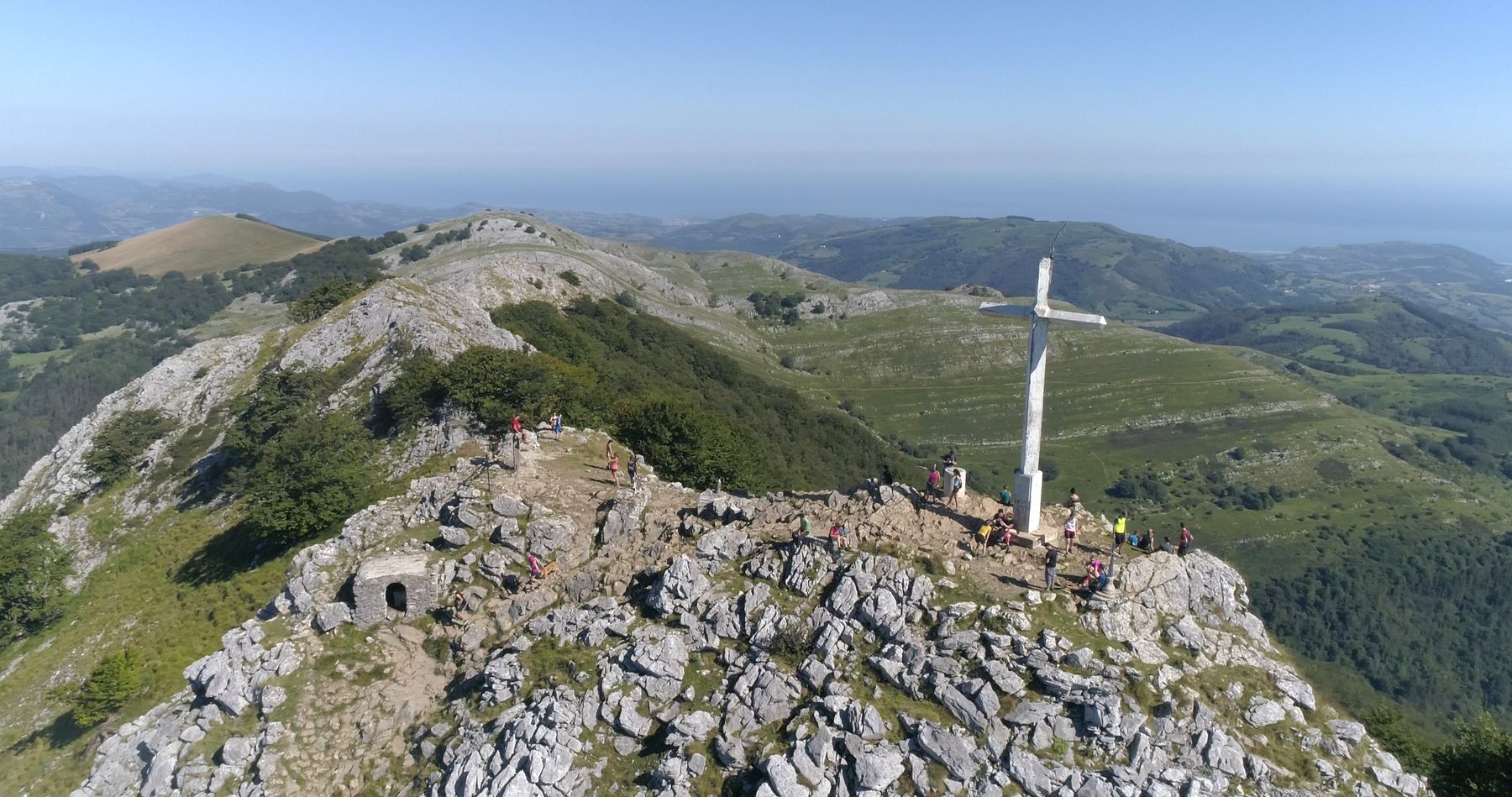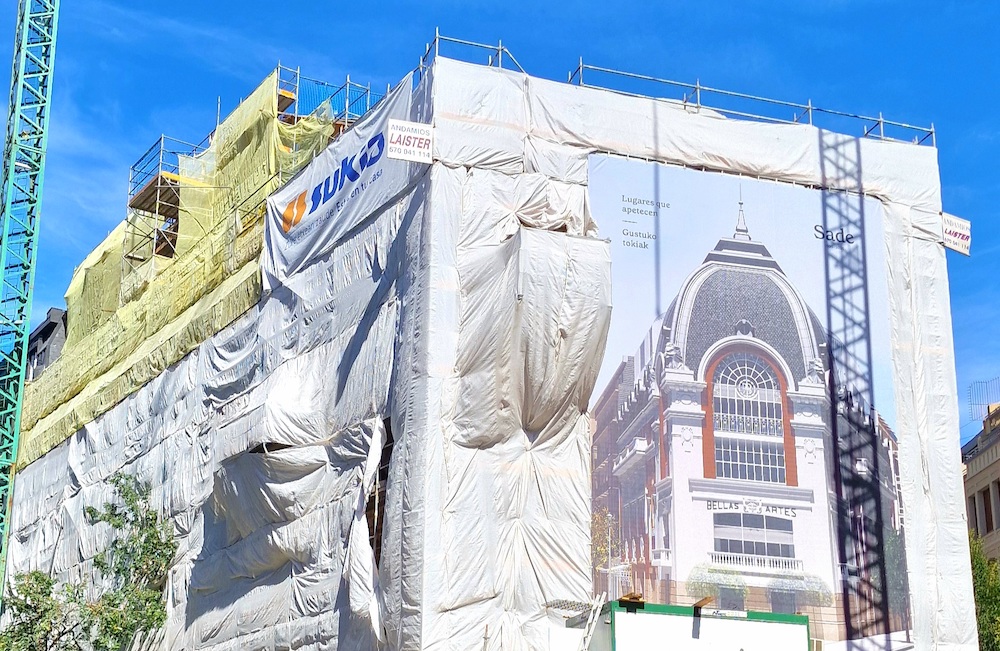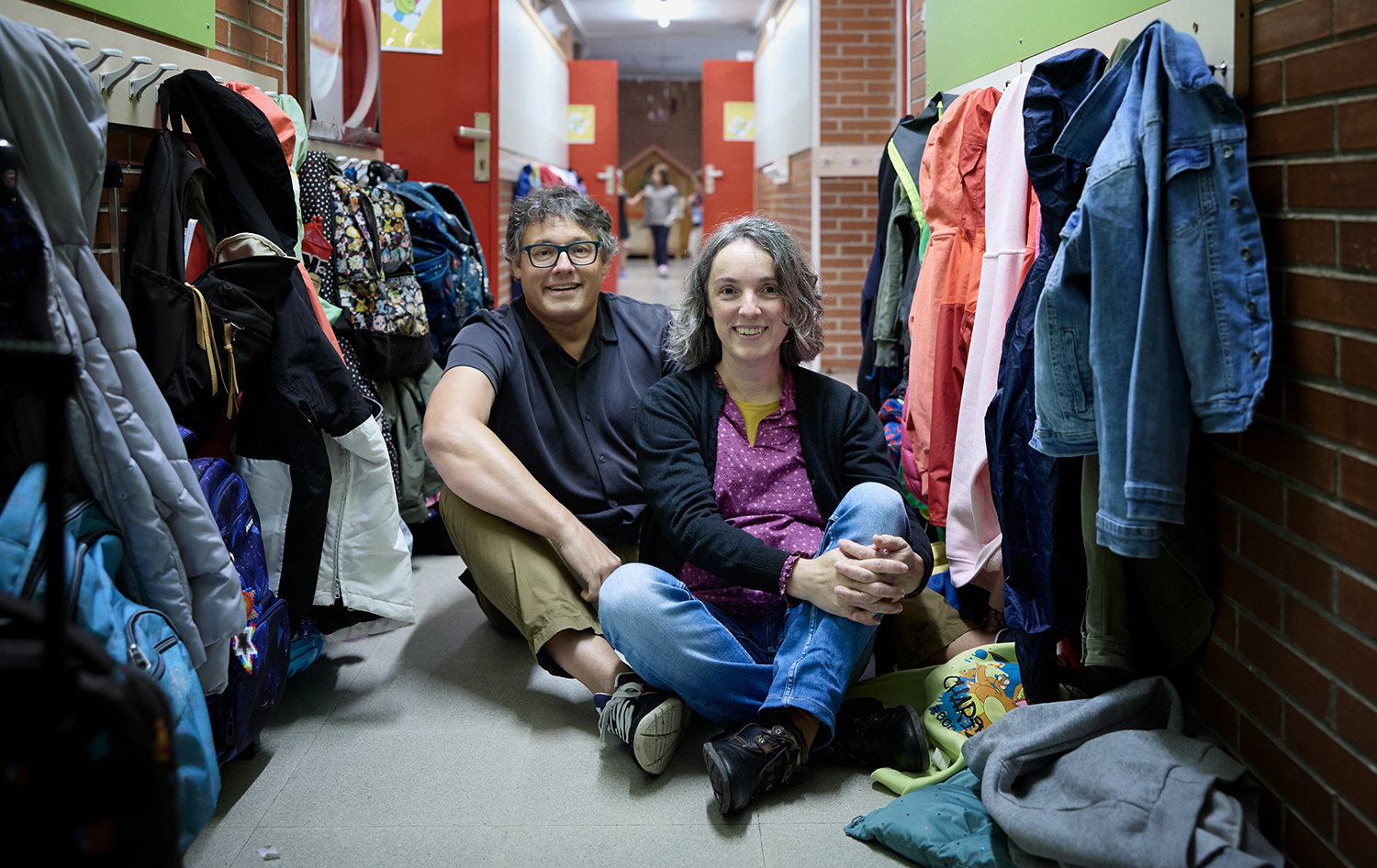"Those who work in architecture inevitably have a political responsibility"
- Ula is hybrid. He doesn't live at all in San Sebastian. Not entirely in Bilbao. He was born in a skyscraper and bears the name of a small hermitage of Salvatierra. Look at architecture from the social sciences. And the lack of purity is not a value for the university route or for the tenders. But from that perspective, it seems that spaces look differently.

Arkitektoa, arkitekturan doktorea eta arkitektura irakaslea da, EHUn. Hezkuntza, Hiria, Dibertsitatea ikerketa taldearen zuzendari eta Aldiri, Arkitektura eta Abar aldizkarian erredakzio-kontseilukide da. Hiria eta bestelako politikak: logika komunitarioa argitalpenaren egilea da (Tabakalera, 2014). Eta Nizu arkitektura lan espazioan arkitektura eta hirigintza lanetan ere badihardu. Arkitekturak –espazioen materializazioaren bidez– eraldaketarako izan dezakeen gaitasunaz ari da hausnarrean azken urteotan.
Which house were you born in?
On an 18th floor of the Zabalburu Towers. Looking at Bilbao. I think that has shaped me. Cities. Bilbao is special, it is surrounded by mountains, it has no sea, and in my time it was dirty. When I was growing up, I dreamed again and again of falling to the Nervión. That stench… Our neighborhood was a luxury space in Bilbao and was fortified. It was a kind of island within a degraded environment. These towers also have a profile as a fortress on top, and so I was drawing my house as a child. I haven't had a neighborhood life. Then go to Mundaka, for example, to see the street life and to see the fascination! I think this contrast has also conditioned my view as an architect.
How did you get to architecture?
My parents are architects. Both. But neither of them encouraged me to do it. Very few women studied architecture in my mother's time, and in that sense it was special. Among other things, I was very late. My father didn't cheer me at all either. Quite the opposite. For an architect, the street seemed tough and I didn't want it for me. I would have liked to have seen a great deal in administration or in education. My mother worked like this, even if she was an architect: administration and urbanism. So, I knew I was never going to work with my father or my mother. I didn't choose the architecture of an idea of continuity, except for the opposite. I remember my mother saying, “Architecture has opened my eyes to me.” And when I was thinking, “what does that mean?” That mystery stood in my interior.
Don't be content with studying architecture, and you decide to have doctorart in architecture.
Yes. I finished my studies, and I started studying right away. And doing the projects. As an architect, we work more at the orders of others, and I also wanted autonomy… And so I did for a few years, working half a day for others and half a day immersed in my projects; doing, doing, doing… And at one point I had the need to stop. That was my thesis. Pause. I had to read it. Think about it. I took time to reflect on what I was doing and what I felt. It forced me to settle. Where do I want to look at architecture? What is my gaze? And lo and behold, there were people who appreciated the political aspect of architecture, and that made me open my eyes and put myself in place. I realized that political architecture is in two senses: on the one hand it is a test and a sample of cultural patterns, and on the other it is a tool for transformation. The decisions taken when constructing spaces have ideology, and the one dedicated to architecture has an inescapable political responsibility.

What do our cities and towns say about us?
How we can move from one place to another. What and where is it traverse. Which neighborhoods are connected and which are separated. Location of classes. Whether they're older or younger. What is allowed and what is not. What you see and what you hide. Use to which more surface area is destined. How spaces are prioritized, what aesthetics is acceptable and what is not... For example, our hygienist extremism is evident. What is being dirty and what isn't? Let's imagine an ancient facade. Does having a trail of time mean being dirty? We see it dirty because it joins the wedge. Because anything that expresses poverty is dirty. The painted ones are dirty but the advertising panels are not. All this is the result of political decisions that reflect and build collective values.
In the city, we read our way of life. Historical and synchronous. What's in the middle, for example. Industry organized cities until the middle of the 19th century, then ours became service cities and have now become a tourist city. In the past the center of a town was formed by the plaza, the town hall and the church. That has a reading. And the center will be occupied by bank offices and streets full of commercial franchises.
"And because we have cars, we can create more distance. That wants to drive an economy, of course. Dependent on oil and precariousness”
You criticize the hyperdefined spaces of the modern city... There is a great
specialization of spaces in our cities. Macro or micro level. At the macro level there is zoning. Here the homes, here the factories, here the services. With this simplification, it's easier to think of cities. There are also economic reasons, of course. The land in the centre of the cities has an economic value and that in the vicinity is another. It is more profitable for the boss to sell these lands to the real estate market than to have a workshop in the middle. The downtown streets become pedestrians and fill with shops capable of paying a high rent; the price of the land on those streets alone defines that any small trade will not be able to pay their rent.
We live in one place and work in another, and we need a car to move around. And because we have cars, we can create more distance. That wants to drive an economy, of course. Dependent on oil and precariousness, among others. We need the car to work and we have to work to buy the car…
On a human scale, we have spaces differentiated by age, class and function. For kids, parks. For the elderly, banks. Things are isolated and unions are broken. There is a hyperdefinition: the city tells us how to sit, where, where we go… There is no room for improvisation. Everything is prewritten in public space. What this means is a need for control. Need to know in advance what it will serve. So we think of cities today, but it doesn't have to be that way. You can put a framework in and let life decide. Let people decide what use they're going to make of that space based on their needs. Let room for the unimagined, for uncertainty, for what comes.
Who are the spaces designed for? Who does it respond to?
This discipline is defined as functional, objective and technical. Therefore, it is designed for some neutral bodies. And behind that neutrality, what's there? An abstract user. A supposed universal body. A mature and productive body, and a homogenised, idealized and built lifestyle, but useful to believe that we give space an ergonomics, measure and ‘rational’ organization. I think we're fine. However, the measures of the banks are designed for certain bodies. Stairs, railings, public toilets -- and that pattern is a concrete pattern.
But what we do is live everyone! And it's functional or not, depending on the needs of all those people and bodies. There are no “neutral” features. So it's interesting to see architecture also from the social sciences. From anthropology, for example. Architecture is at the crossroads of art, technique and social sciences, because it reflects and shapes society.
To what extent does architecture adapt to our way of life?
The link is very close. Our vital trajectory is also marked by architectural decisions. The change of life often leads to a change of residence. From parents to students. Or the partner's. And when there were kids, more house. Even when affective structures are dismantled, space changes can occur. Or when the management of the surveillance work requires it. Professional and personal itineraries are full of a limited change of space. And of course, the system -- and therefore urbanism -- drives a family model.
The idea of the American suburban house, for example, has gotten us all the way to the bones. The house of dreams. Car and garden. That's the idea of success. Today, single-family housing is the model and goal of the success of many people's lives. It's not that we really want to live architecture in that way. What we've been introduced to is that as we take steps in consumer capacity, when we have the opportunity, we have to try to get our own plot. It has its own place of plant control. And let it be big. Why do we need large domestic spaces? Why do we need so much? To have. Just in case. Having is always good. Possess and accumulate.
And that image of the house is linked to the couple and the children. In this imaginary, professional and personal success has nothing to do with the construction of an affective network. The base is the couple and the nuclear family. And all of this, of course, in relation to a model of life and consumption.
And meanwhile, in cities, apartments for families, all like that.
Three bedrooms, one large and two small. The same scheme is always reproduced. “This is sold,” says the developer to the architect, and the architect has to do so. One of them is very sold when the market is at stake. And we, as users, have a lot of trouble making courageous decisions.
Organizing the house is very intimate. And transcendental too. Architecture is always an important monetary investment. And if for most people it's not the most important economic investment in their lives, it will be one of the most important. Every decision is unique. These are choices that will condition our experiences and relationships. On the other hand, the house has a great symbolic burden. They each carry their backpack. Memory of the people who have been their homes. Representation of the external gaze. The house is identity. Seeing someone's house is like seeing someone naked.
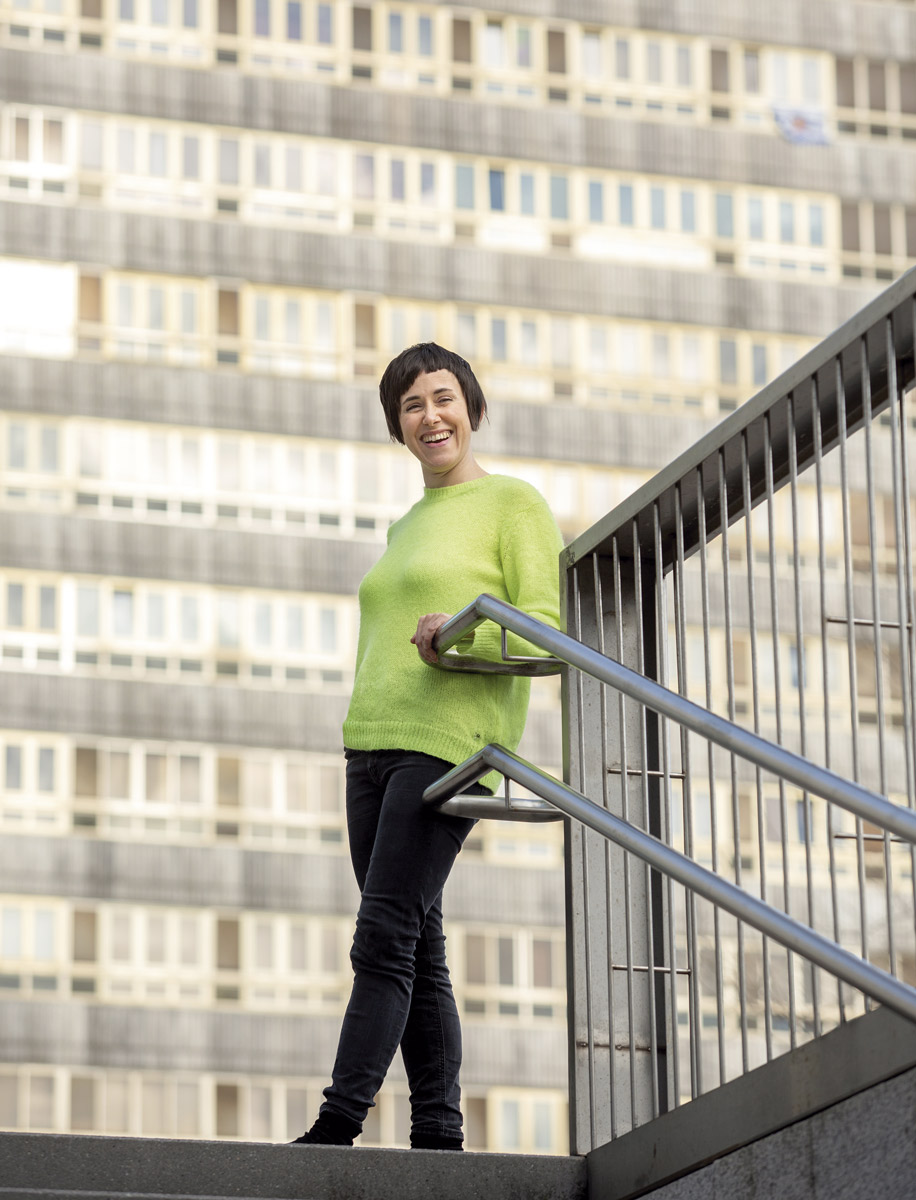
Is it a sensible working material when you work on the rehabilitation or restructuring of someone else's house, right?
It's a very intimate process. In addition, change often takes place in a moment. It's a relocation state. And there you see where the risk levels of each are. I cannot do that. I thought I wanted, but I don’t dare… There you see if the windows are to see the outside, especially, or so they can see you from the outside. The value of the bed for you. Toilets. One client told me he wanted to change his daughter's room when he had just divorced. He entered the house and the disaster there was the living room. Her daughter's bedroom was in perfect condition. But I wanted to take care of her daughter's space. That first and then the next ones. And I wanted to take the bed out of two and make it small in her room! And I lied. “No, excuse me, but spatially, this room requires a large bed.” In these kinds of processes, it's very difficult to know what your place as an architect is.
I didn't think about the influence that architecture can have in our lives. How important was it?
Yes. We project -- architects don't say we design, we design it -- and any projection is actually flawed. I have to know what needs there are, but at the same time I have to leave room for whatever comes. Today's needs are not necessarily those of tomorrow. But in uncertainty we get discomfort and resistance. We want to project it for that to last – that is also cultural, because there is no need to build everything to perpetuate it – and I don’t know what for. Flexibility, adaptability, resilience… in theory they are very nice and we are all in favour, but it is a cultural issue; our need for control limits us and we do not know how to do it. The same thing happens in our lives. Now we do not know how the situation will be in two weeks’ time, and we do not know that.
* * * * * * *
ABOUT NATURE “The
organization of our territory indicates our relationship with nature. The route of the railways will determine where and how far things will go, among other things, because we have occupied the agricultural land of the city, so we must bring food from elsewhere. In the representation of Euskal Herria, dwelling is a sacred element, but then, in this reality of megacity cities, dwellings are nothing but a symbol of our romanticism... Our lands, rivers, forests, we understand them only for their exploitation, in practice. When we re-route or bury a river, we are saying that we believe we are above it.”
PANDEMIC “The
bug that has turned the world upside down is very architectural and has set us looking at the spaces. The pandemic has made clear how fragile our cities are, as well as our economy. It has become clear that all policies have been made in the face of the city’s postal service and that has not been done for the interests of the locals. Look at the Old Part of Donostia. During the pandemic it has shown that the design of our cities is not fit to live. It makes sense only in the parameters of efficiency, productivity and speed. A parameter has been changed and everything has become absurd. Banks and squares are not used for this purpose. The first streets served to go from one place to another, and the walks were for walking. And in the pandemic it's all about walking. The organization of spaces should be flexible to withstand unforeseen situations”.
A prestigious architect comes from London to a small Galician town. It is David Chipperfield, a building with offices in Berlin, Milan and Shanghai, and has a large team of buildings. An elegant, refined architecture, made by a Sir. The story begins in the village of Corrubedo... [+]
In recent weeks it has not been possible for those of us who work in architecture that the climate phenomenon of Valencia has not been translated into our work discourse. Because we need to think about and design the path of water in decks, sewers, plazas and building parks. We... [+]
The first of September, releases, novelties and releases: new case and notebook, first meeting with the members of the group for the courses and/or activities to which it is appointed, a wide range of activities in the advertising pages where you can complete the course agenda,... [+]
I have few friends with a European feeling, I do not know whether Europeity becomes an identity. But when we travel to Europe, a friendship may emerge, because the main areas of territoriality that are taking place in Europe and in Europe are shared, where it is decided to... [+]
Train stations in many cities show the highest beauty of the 19th century iron structure, along with the rise of arrival at the epicenter of the city. It's like entering the city through the front door, a pearl of architecture and place. However, in many cities, in the phenomena... [+]









